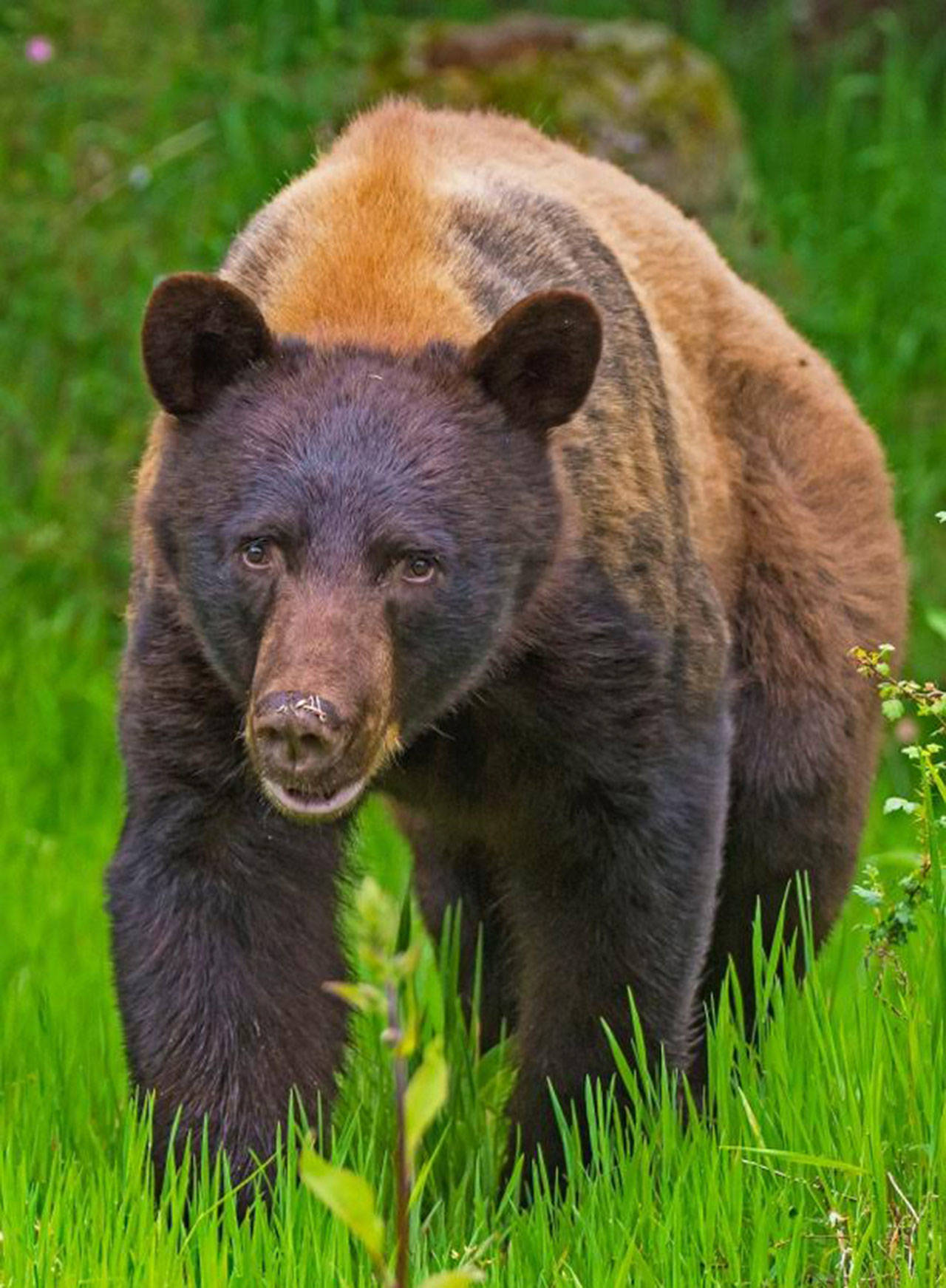The black bear that arrived on Orcas over Memorial Day weekend has likely been eluding authorities for some time.
Residents of Blaine, then Ferndale and then the Lummi Reservation (located to the west of Bellingham) reported seeing a black bear in mid-May. Washington Department of Fish and Wildlife officers set traps that proved unsuccessful. The bear later swam to Lummi Island, where two more traps were set, but he dodged those as well and officers assume it swam to Orcas Island.
At around 4 p.m. on Saturday, May 27, it was first seen on Point Lawrence Road heading toward Obstruction Pass. The bear has since been spotted by a handful of islanders in Olga, the North Beach area and Buck Mountain. He has been reportedly getting into sheds and garbage cans.
“We have tried to catch this guy but he will not stay in one place for very long,” said WDFW Game Warden Dave Jones, who is confident the bear on Orcas is the same one he’s been trying to catch for weeks. “Additionally he does not seem to have a specific food source that I can set my trap on. I do have a trap set on Lummi Island in the event that he swims back. In the 15 years of doing this, I have never had a bear swim to an island.”
Generally, the bears he catches are two- to three-year-old males and between 150-200 pounds. Jones says this particular one has not been aggressive but “does like chicken pens and the occasional bird feeder.”
“I have no idea if he will stay on the island or not as it appears that he has no limits on where he will go,” said Jones.
Fish and Wildlife officers set a trap on June 3, and the location is not being released in order to prevent the public from tampering with it. If you see the bear, call the San Juan County Sheriff’s Office at 378-4151.
“This helps us track him and it is our hope we can safely apprehend him and the WDFW can relocate him to a more suitable place in the Cascade Mountains,” said Sheriff Ron Krebs in a press release.
Some islanders have wondered if there are multiple bears as the descriptions are varied.
“It is very common to get wide ranges of descriptions when it comes to bears,” said Jones. “The very same bear will be called in to me where one person says it is 100 pounds and black in color and then the next caller says it is 300 pounds and brown in color. I am extremely confident that we are dealing with one bear in this case.”
The American Black Bear (Ursus americanus) can swim incredible distances and one of the largest populations of the species live a short distance away on Vancouver Island. They live an average of 20 years in the wild, can weigh between 200-600 pound and are as tall as 5-feet, 6-inches. While their diet consists mainly of vegetation, berries and bugs, they will eat fish and mammals, and can develop a taste for human food and trash. According to the Smithsonian’s 2011 story “How to Avoid Being Eaten by a Black Bear,” one study estimated that there were 750,000- 900,000 black bears distributed across North America, and their numbers have been growing.
Ruth Milner of WDFW advises residents to lock up their garbage, keep all pet food inside and remove bird feeders.
“This time of year, bears are after calories and you’d be amazed at how many bird feeders attract bears,” she told the Sounder. “Bears are omnivores and seeds provide high-calorie fats so they are easy targets for bears. We have a difficult time convincing people that birds don’t need food from us at this time of year and the best thing to do is take them down to dissuade bears.”
Milner doesn’t expect the bear to stay on Orcas for very long as it will need to find a mate at some point. Its age and sex are unknown but Milner says it looks young and immature in photos. WDFW asks that people not attempt to feed or harm the bear. Shooting it is considered poaching. If you see a black bear standing up on its hind legs, it is just being inquisitive. State wildlife offices receive hundreds of black bear complaints each year regarding urban sightings, property damage, attacks on livestock, and bear/human confrontations. Black bears have been known to attack and kill humans. According to the department’s website, 95 percent of calls about black bears are the result of irresponsibility on the part of people who allow access to trash, pet food, bird feeders, and do not properly store food while camping.
According to “Backpacker” magazine, “In the 2000s, there have been 27 fatal incidences so far in North America, resulting in 29 deaths. 15 were in Canada, three were in Alaska, two were in Tennessee, and single fatal attacks happened in New York, New Mexico, California, Pennsylvania, Colorado, Utah and Montana. Seventeen of those attacks were perpetrated by black bears, and 10 by grizzlies.”
Below is a video an Orcas resident took of the bear:



